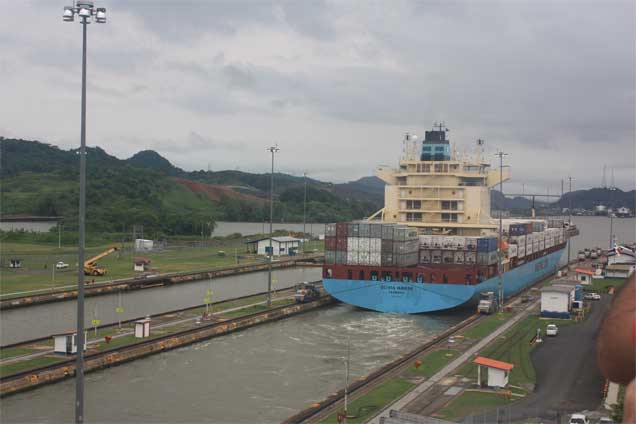
The Panama Canal is a must-see for anyone visiting Panama City. I even went twice: once with Rick on our first day there since he would not get another chance to go with full day meetings; and once with the wives as part of a sightseeing tour. Each time I learned something more about this amazing feat of construction and engineering. Alas, somehow I got home without my little pamphlet with all the facts. Boo hoo! Now I’ll just have to go on memory and whatever facts I can find online to fill in the gaps. However, much of the information online does not include what I learned about it! Kind of strange ...
The Panama Canal opened in 1914 after many grueling years of construction. Laborers arrived from all over the Caribbean islands to work on the canal, and today you can see that “melting pot” in all the faces of the people of Panama. Not an easy task whacking your way through mosquito infested jungle and dredging out all that land. Thousands of people died during those years, and mostly from mosquito borne diseases such as yellow fever and malaria. The poor French (who started construction of the canal before it was turned over to the Americans to finish) made their situation much worse by assuming that the deaths were coming from disease-ridden rodents instead of the mosquitoes, and put the legs of their beds in buckets of water to keep the rodents away. Instead, they were creating a breeding ground for the very thing that was killing them.
From the balcony of our room at the Playa Bonita Resort we could see the ships lined up and waiting for entry into the canal each morning. By early afternoon they would all be gone and the next group of ships would start queuing up for the following day. I later learned that as each ship arrived it was given a number in the queue.
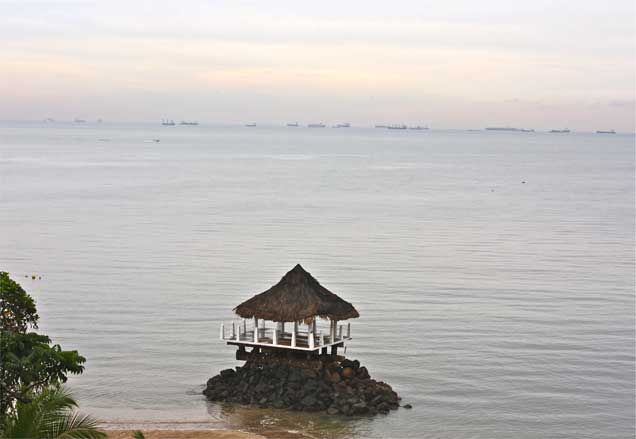
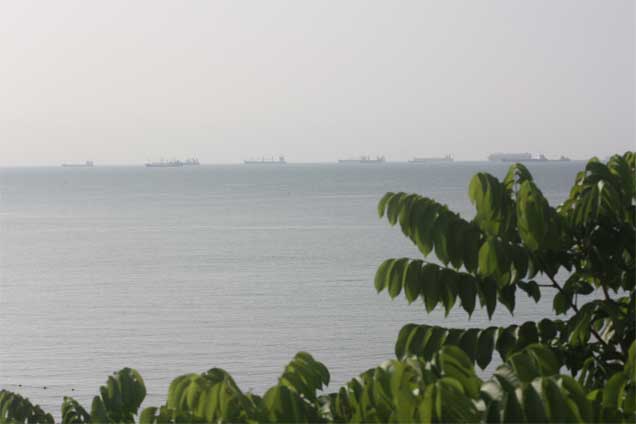
The Miraflores Locks are the best place to see the locks in action. They have a tourist center there complete with a viewing deck, informative museum, a short film about the history of the canal, and a restaurant.
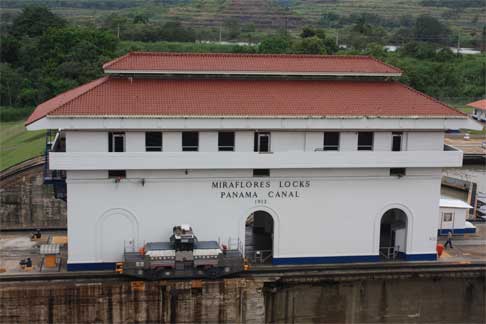
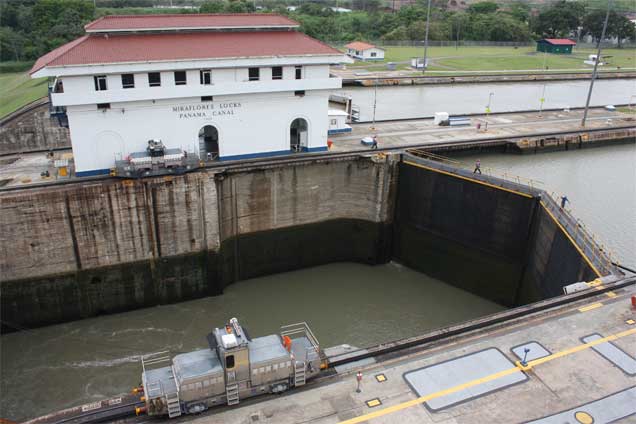
From the viewing deck you have a bird’s eye view of the locks. There are two sets of locks, side by side to allow two large ships passage through at the same time. Here is a container ship in the far first lock.
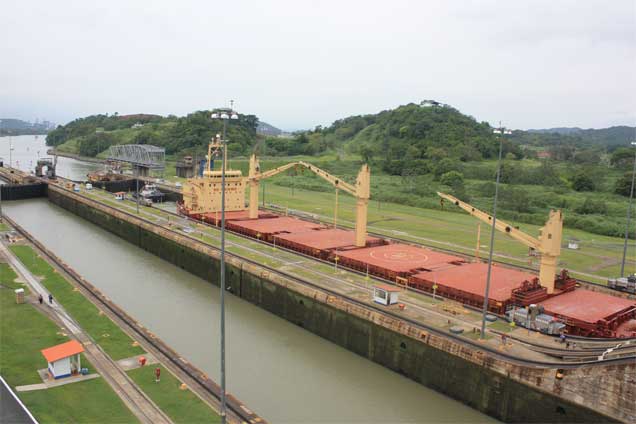
And another ship preparing to move into the other lock.
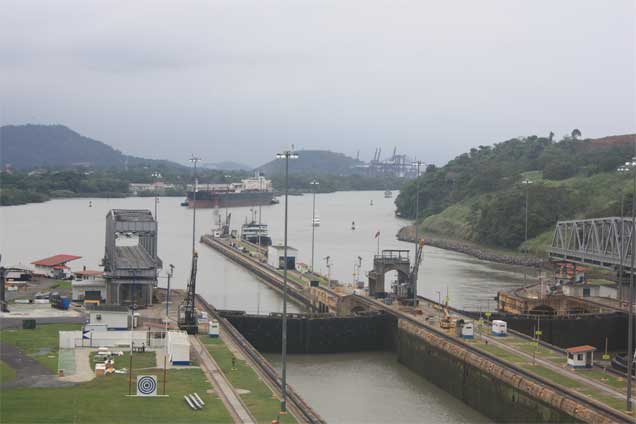
The container ship has the help of a “mule” (heavy duty small trains that run on a track next to the locks) to keep it centered in the narrow space so it doesn’t hit the sides. See the guide wires running from the mule to the ship? I really wanted the job of driving one these mules. It looks like fun! You know me—Ms. Heavy-Equipment-Operator-Wannabe.
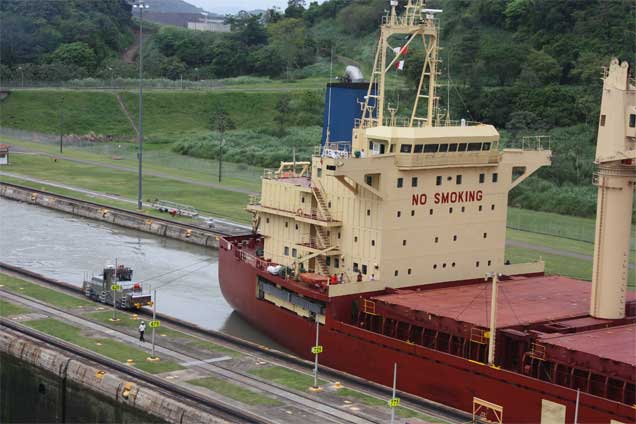
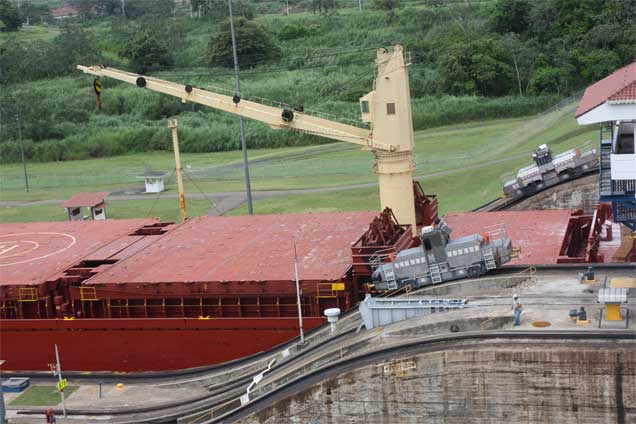
Meanwhile, while the container ship is in the second lock, the other ship makes its approach to the first lock with the help of a tug. Can you imagine trying to line up a huge ship to fit into a space just wide enough to hold it? I have a great deal of difficulty just trying to parallel park for pete’s sake!
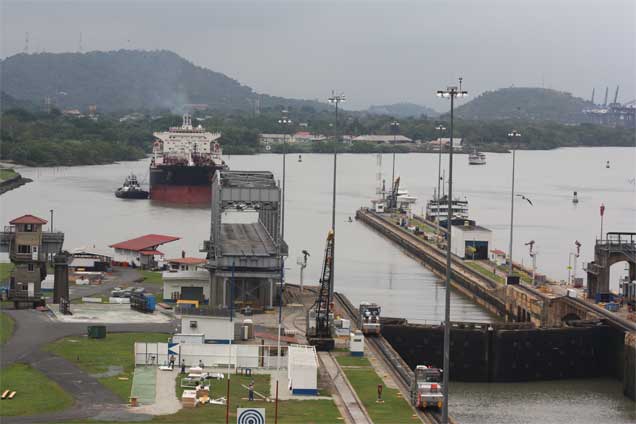
And here is the container ship in the second and final lock along with its tug, and then leaving the lock on its way to the Atlantic Ocean.
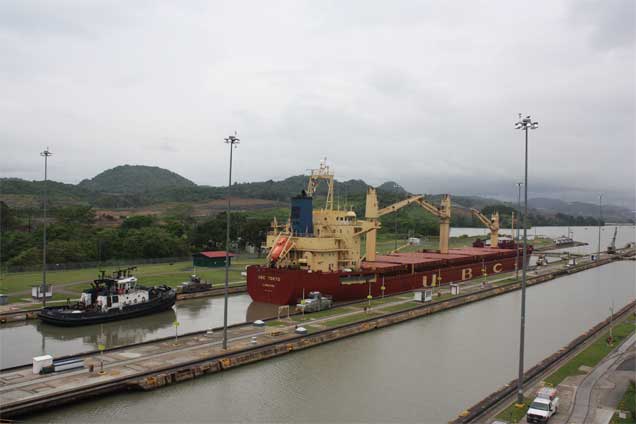
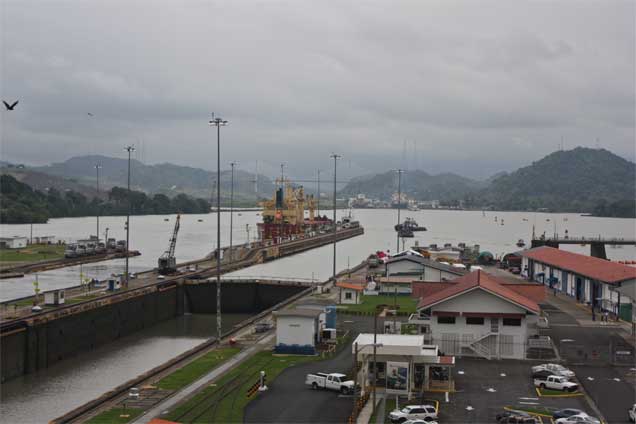
Here are some more shots of the tanker as it comes into the first lock.
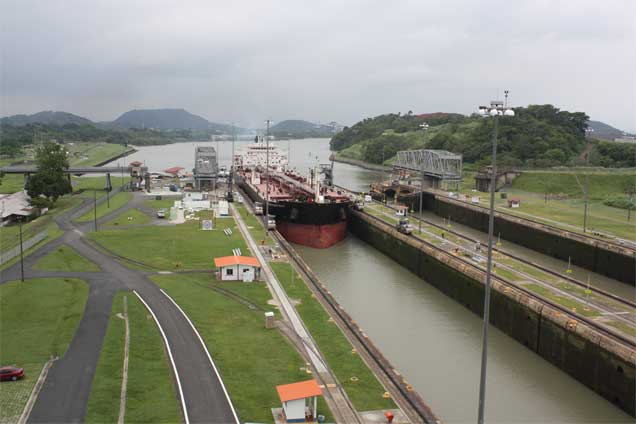
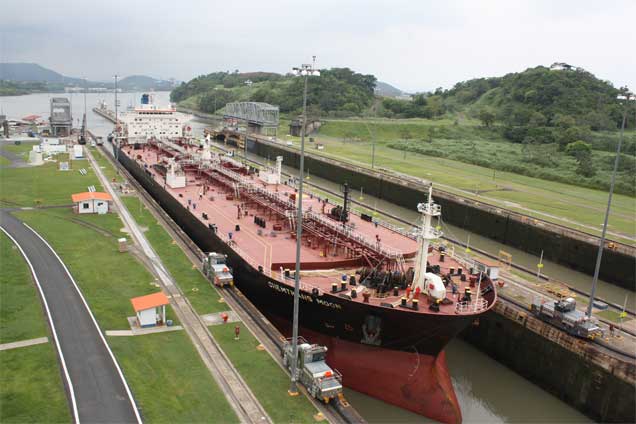
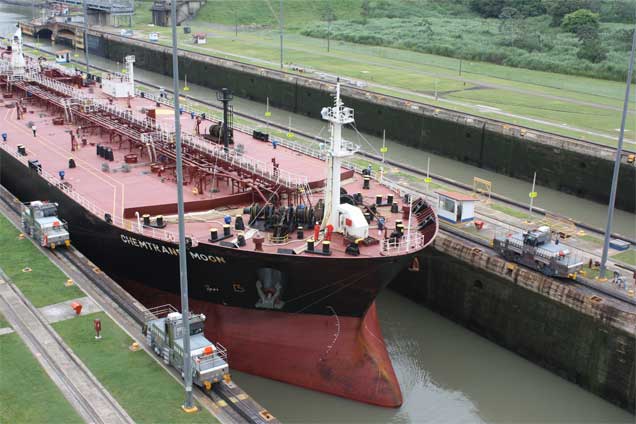
Almost in the first lock completely.
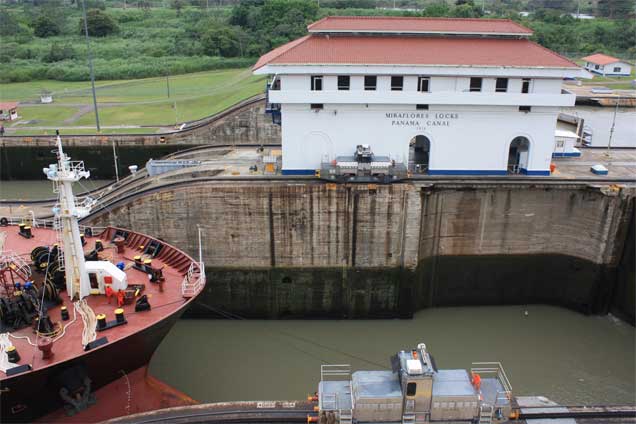
It takes about 12 minutes or so for the water level come up to completely. That is incredible considering there is no pumping done—it all works magically by gravity alone! Think of all that water! They rely on the plentiful rainfall they get to replenish the man-made lakes that they made to “run” the water for the canals. Trust me. They get plenty of rain!
Here’s a photo just to show you the scale and how big these ships really are.
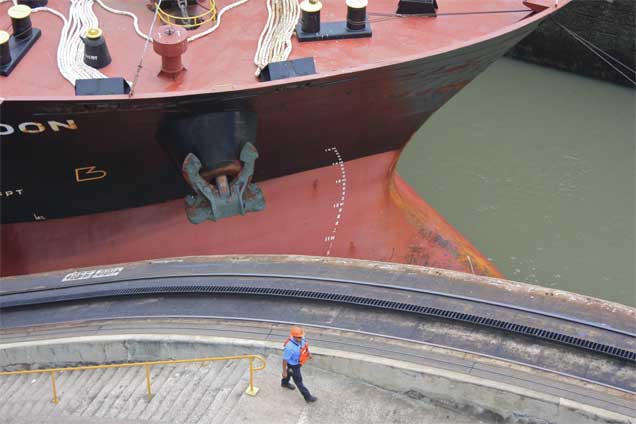
Rick made this short video of the tanker coming into the lock.
Traffic is one-way through the canal. Usually in the mornings the ships move from South to North, or from the Pacific side to the Atlantic side. The locks close for several hours midday to allow the passage of the ships through the narrow Gaillard Cut which is only wide enough for one ship to pass through. Then the locks are opened back up and the ships are let through going the opposite direction. Only about 12 or so large ships go through each way, each day. 24 ships is not really a lot when you consider how popular the Canal is! When they can they put other smaller boats in with the big ones. I don’t really want to be on one of those small boats in there with some big ship!
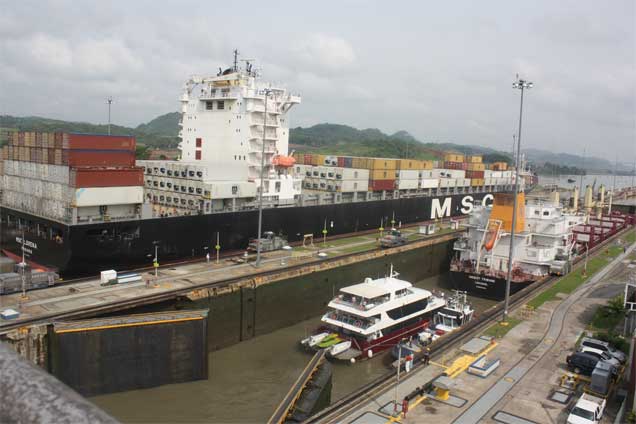
It takes about eight hours for a ship to make the complete transit through the canal. Here is a map so you can see the route.
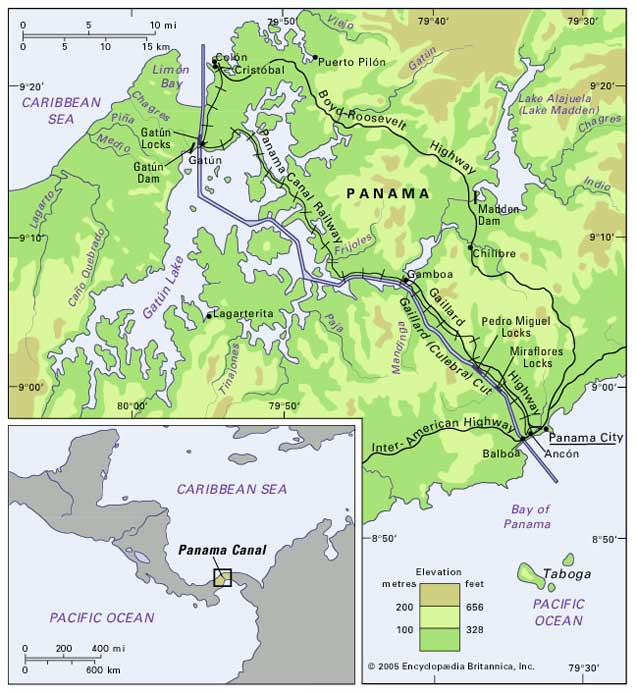
Transit through the canal may save a ton (no pun intended) of money in fuel (compared to going around the whole continent of South America), but it doesn’t come cheap either. A typical toll for the average container/tanker is around $200,000 per transit. The highest toll ever paid goes to a Norwegian cruise ship that paid $450,000 one-way. The lowest toll ever collected was in 1928 from a man named Richard Halliburton when he swam the canal for 36 cents.
Let’s face it, the canal is showing its age. What the average size of ships was in 1914 is no longer true today. Many of the bigger ships being built today simply do not fit. Work is underway to complete a new set of bigger locks and is due for completion around 2014 or 2015. This will allow more ships—and bigger ships—to pass through.
Now you just might be wondering how skilled a pilot you have to be to navigate your ship through the locks? Every ship that passes through the locks has a certified Panama Canal boat captain board their ship prior to their approach of the locks and pilot it through. Pretty cool, huh? With an annual salary of $85,000 it’s a coveted career in Panama. Here is a class of young pilots taking a break from their studies.
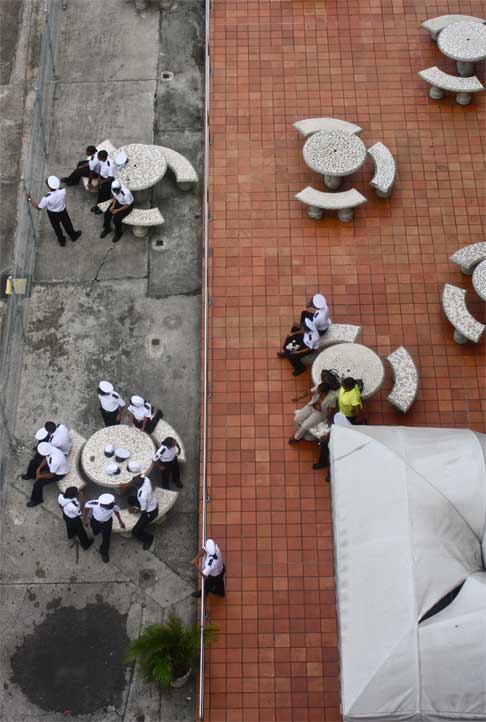
I hope you’ve enjoyed your transit through the Panama Canal! I’ve tried to tell you everything I learned or remember about the canal from my two visits there. I’m sure I’m forgetting something but I didn’t want to weigh you down in details. I hope that you learned some things today that you didn’t know before!
I found this great time lapse video of a complete transit through the canal. Take a few minutes and watch it. Enjoy!
Or here is the link.
Posted by Lynne on 07/21/2011 at 12:57 PM
Filed under:
Daily Life •
Travels Beyond New Jersey
